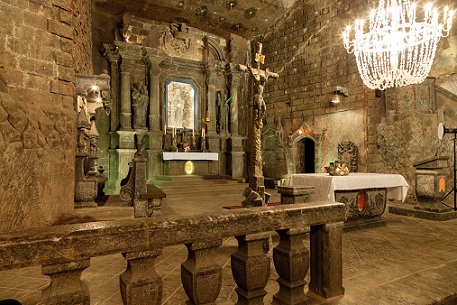Keeping underground tourist destinations safe

Related topics
Innovation SMEs Innovation in SMEs Estonia Poland Spain United Kingdom North Macedoniadate: 21/01/2014
Project: Wireless intelligent system for environm...
acronym: UNDERSAFE
See also: Info-Centre
Contact: http://www.undersafe.eu
Monika Bandura of INNOWA, a leading R&D company in Poland, is coordinating the two-year project. Its extensive experience in providing cutting-edge technology solutions has proven invaluable in developing the system’s hardware. About 27 million people visit underground destinations every year in Europe, and with this specialised industry poised for steady growth, its economic and social impact is becoming evident. By 2014, it is estimated that there will be more than 1,800 underground tourist attractions in Europe, primarily in Germany, Austria, Italy, Spain and France. Several specialist tourist companies came together with the SMEs to recognise the need for state-of-the-art technology, in addition to a uniform regulation scheme, that would lead to better security, biodiversity preservation and environmental conservation. The reputation of underground attractions as being safe and environmentally friendly was at stake.
The project was launched in late 2011 thanks in large part to EU funding: ‘The project simply would have been impossible to carry out without the EU contribution – it made all the difference,’ stresses Mr López Orriols. ‘What is more, the SMEs didn’t have the product development capacities or the qualified personnel.’ He also explains that the ‘AP Module’, the system’s basic unit, will provide round-the-clock detection and early warning about situations that could potentially pose threats to tourists, guides as well as professionals working underground. This remote software device in the form of a necklace or bracelet enables users to access a central monitoring system via all popular mobile devices. Alerts are issued in cases where people enter nonvisitor areas or unstable zones, when a visitor remains immobile for an extended period of time, or when someone falls behind a group. It is easy to install, use and maintain, and can continue to run for up to one hour during a power failure.
The system will offer complete environmental control of the underground facility in terms of physical parameters (e.g. humidity, temperature) and gas sensing (e.g. carbon dioxide, oxygen, carbon monoxide). For instance, it calculates the maximum number of visitors a site can accommodate without destroying flora and fauna or ancient drawings. It will also include structural sensors to detect rock falls and landslide movement.
The SME partners acknowledge the tremendous market potential since it is the only such product that focuses on underground tourist attractions. The SMEs will gain a competitive and timing advantage with a novel product and with access to advanced technologies. The commercialisation phase will inevitably lead to the establishment of a new company and the creation of jobs.
The UnderSafe system will be commercialised by Arthaus (the former Yugoslav Republic of Macedonia), Electronics Design (Estonia) and EC Electronics (Poland). Spain’s Polytechnic University of Catalonia lends its expertise in mining engineering and underground environments. Poland’s Wieliczka Salt Mine provided know-how during system definition and design, and offered its facilities for installation and testing. ‘It’s the consortium’s combined expertise and diverse core competencies that have made the development possible,’ says Ms Bandura.
Following successful testing and validation of the project results at such famous attractions as the Wieliczka Salt Mine, one of the world’s oldest salt mines still in operation, Mr López Orriols is optimistic of going to market in 2015.
‘There’s interest right now, and not only in the EU, but globally as well,’ he says. ‘We expect to commercialise the product beyond the EU, and by maximising its export capacity, the EU stands to benefit. In fact, the SME consortium has initiated contacts with sites in Australia, and the US is next.’
